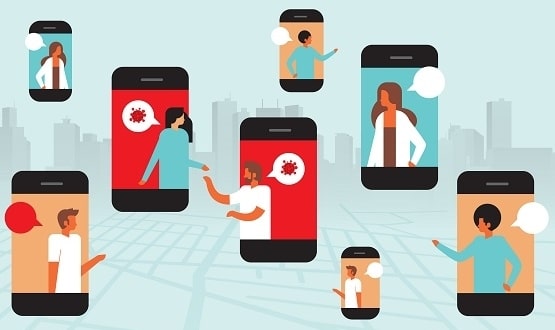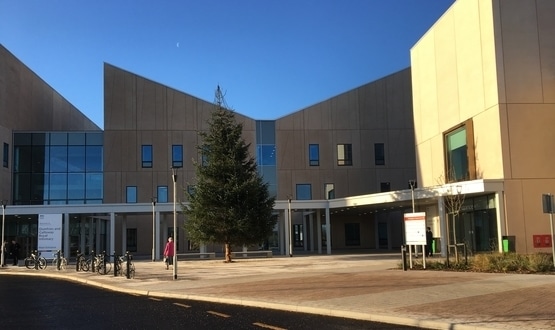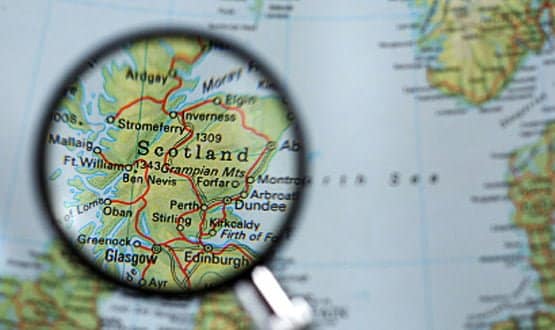‘A customisable approach’ – how contact-tracing apps differ in the UK
- 24 September 2020

The last few months have seen both Northern Ireland and Scotland work with software developers, NearForm, and launch their own individual contact-tracing apps. Digital Health News spoke to NearForm about the technology and how it works.
Northern Ireland and Scotland pipped England and Wales to the post in the contact-tracing app race, with the two countries opting to use different technology.
The NHS contact-tracing app based on Apple and Google’s technology launched in England and Wales today, but Scotland and Ireland chose to go their own way working with software developers NearForm.
“One of the key differences between what we offer and what Google offers is we offer a far more customised app solution,” NearForm’s technical director, Colm Harte, said.
Both apps use Bluetooth to track time and distance between devices, sending exposure notifications to devices that have spent more than 15 minutes within two metres of another user who has tested positive for Covid-19.
Apple and Google offer a “templated app” and not a “full end-to-end solution”, according to Harte.
“What they are offering is the app piece, but you still have to provide the key server, the verification server and you still have to do the integration with your manual contact-tracing systems,” he added.
“And that’s all part of what the NearForm solution has brought to the table with different countries. We provide the back-end key server, the one-time code for the verification flows so you can trigger an upload on an app.
“If you look at either apps we’ve brought so far, they are very much tied into the language, look and feel in terms of how government is dealing with Covid-19 in their particular jurisdiction.”
Harte said the “customisable interface” provides governments using NearForm’s app more flexibility with how it plugs into their manual contact-tracing system.
This allows messaging around Covid-19 to be more consistent, he explained.
“It’s using the same terminology, it’s providing the same type of advice, so it’s a much more customized interface for the particular population,” Harte added.
“A lot of countries are using different platforms for their manual contract-tracing, so integrating the two is very important for a seamless experience as the manual contact tracing is the driving force.”
The app used in the Republic of Ireland, for example, allows a user to voluntarily input their phone number, which is then provided to a member of the manual contact-tracing team should the app receive an exposure notification.
“A lot of people have opted into that feature because they want that reassurance that there is someone they can speak to if they do have a close contact alert,” Harte said.
The Republic of Irelands app, developed alongside NearForm, was launched in early July and was downloaded one million times in the first 48 hours. Ireland’s Health Service Executive (HSE) later published the app’s Covid Tracker code as part of an open source programme to help global public health authorities tackle the pandemic.
Northern Ireland released its app, StopCOVID NI, at the end of July followed by NHS Scotland in September. Both apps were developed alongside NearForm and were based on Ireland’s Covid Tracker code.
‘Not just technical challenges’
Asked why Ireland and Scotland had seemingly been more successful at getting a digital contact-tracing solution off the ground, Harte said there are a number of challenges faced when developing apps.
“There’s a lot of complexity to building these apps. There’s the technical side of things but there’s also a lot of organisational challenges and we’ve seen that with the countries we’ve worked with,” he said.
“There’s a lot of groups that have to be brought together and there’s a lot of decisions that have to be made.”
That process includes how you integrate the app into the overall contact-tracing process and the manual process, Harte said. Without these discussions the app is unlikely to be a success.
“Effectiveness is showing that you’re breaking transmission chains, so if you’re identifying people through digital contact-tracing that manual contact-tracing didn’t identify and those people turn out to be positive you’re breaking transmission chains,” Harte told Digital Health News.
“That’s really the purpose of what you’re trying to achieve with these contact-tracing apps.”
The importance of open source
Harte emphasised the role open sourcing the code for the Irish app had played in allowed other countries to further their own digital contact-tracing abilities.
NearForm’s software has been used to develop contact-tracing apps in US states including Pennsylvania and Delaware; Gibraltar; and Jersey alongside Ireland and Scotland.
“A key piece of that [NearForm’s success] is when Ireland launched their app they open sourced all the code, and the Irish health authorities were very happy to share in terms of what they were doing, how they were doing it and who they were using to build their app,” Harte said.
“They were also happy for other countries to levy their source code in order to build their own app, so that obviously helped other people to accelerate what they were doing.”
Ireland’s HSE provided the code to the newly established Linux Foundation public health initiative which aims to use open source software to help public health authorities around the world combat Covid-19 and future epidemics.
The code is available of github.





1 Comments
If I live in Gretna and work in Carlisle, which do I choose, the Scottish or English app? Or do they talk to each other? Ill bet they don’t. So, in the hallowed tradition of the NHS, fragmentation rools OK!
I had hoped that TnT would be first example of a truly national NHS app. But sadly No.
Comments are closed.